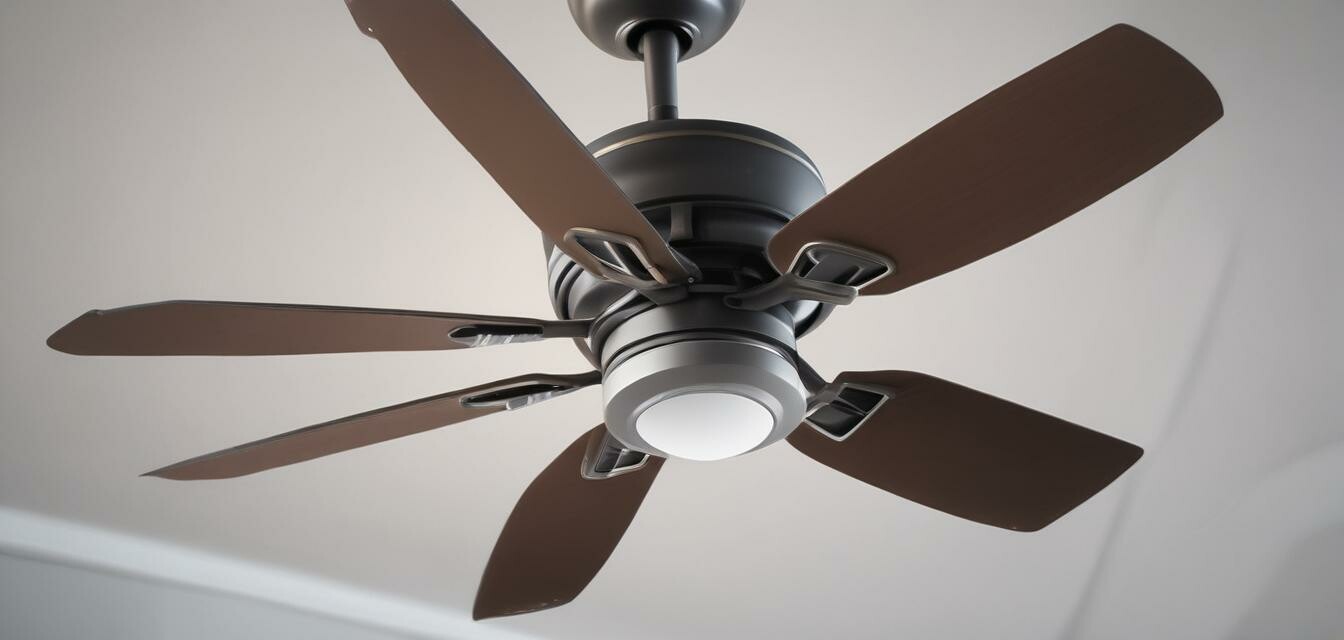
The Complete Guide to Selecting the Right Fans
Key Takeaways
- Understand different types of fans available on the market.
- Identify features to consider when selecting a fan.
- Learn how to match fans to specific applications.
- Consider energy efficiency and operating costs.
- Explore brands and models for informed purchasing decisions.
Choosing the right fan can greatly improve airflow and comfort in both residential and industrial settings. This comprehensive guide helps electricians and DIY enthusiasts understand the various types of fans, essential features, and key considerations for selecting a fan tailored to specific needs.
Types of fans
Fans come in a range of types, each designed for specific applications. Below, we outline some common types of fans:
| Fan Type | Description | Common Uses |
|---|---|---|
| Ceiling Fans | Mounted on the ceiling, these fans help circulate air in rooms. | Living rooms, bedrooms, and dining areas. |
| Exhaust Fans | Designed to remove stale air from indoor spaces. | Bathrooms, kitchens, and utility spaces. |
| Portable Fans | Movable fans that provide airflow wherever needed. | Outdoor events, workshops, and personal use. |
| Industrial Fans | Heavy-duty fans meant for large spaces and tough environments. | Factories, warehouses, and garages. |
| Desk Fans | Small fans meant for localized air circulation. | Offices, work desks, and bedside tables. |
Features to consider
When selecting a fan, several features can affect the performance and suitability of the device for your needs. Here are some key factors to keep in mind:
- Size: Ensure the fan is adequately sized for the area it will be used in.
- Speed settings: Look for fans with multiple speed settings to adjust airflow as needed.
- Noise level: Choose fans that operate quietly, especially for residential use.
- Energy efficiency: Opt for fans with energy-efficient motors to save on electricity bills.
- Blade design: The blade design can affect airflow; consider the number and shape of blades.
- Controls: Remote controls and smart features can enhance user convenience.
Choosing the right fan for applications
Here are tips on how to choose the right fan for different applications:
- Residential Use: For living spaces, consider ceiling or portable fans to enhance airflow.
- Bathroom Ventilation: Use exhaust fans to prevent moisture buildup and improve air quality.
- Industrial Settings: Select heavy-duty industrial fans that can withstand tough conditions.
- Outdoor Events: Portable fans are perfect for providing comfort during outdoor activities.
- Workspace Airflow: Desk fans can improve comfort in personal workspaces.
Energy efficiency and operating costs
When selecting fans, it’s crucial to consider energy efficiency. Energy-efficient fans can lead to significant savings in operating costs. Look for fans that are rated for efficiency and bear the ENERGY STAR label. Here’s how energy-efficient fans compare:
| Fan Type | Typical Energy Consumption | Annual Operating Cost |
|---|---|---|
| Ceiling Fans | 50-75 watts | $15-$25 |
| Exhaust Fans | 30-60 watts | $10-$20 |
| Portable Fans | 15-50 watts | $5-$15 |
| Industrial Fans | 100-500 watts | $30-$100 |
Brands and models to consider
While we won't mention specific products, consider reputable brands known for their quality and performance. These brands often have a range of models catering to different needs. It is beneficial to read reviews and compare specifications before making a decision.
Conclusion
In summary, selecting the right fan involves understanding the different types, their features, and how they fit specific applications. By paying attention to energy efficiency and reputable brands, you can make informed decisions that enhance comfort and air quality in your spaces.
Beginner tips
- Measure your space to choose the right size fan.
- Check manufacturer's recommendations for airflow needs.
- Consider your budget, but don't sacrifice quality for price.
- Read user reviews to gauge performance and reliability.
Pros
- Improves airflow and comfort.
- Reduces humidity and mustiness in enclosed spaces.
- Offers variety for different needs and spaces.
Cons
- Some fans can be noisy.
- Installation may require professional assistance.
- Initial costs may be high for quality models.